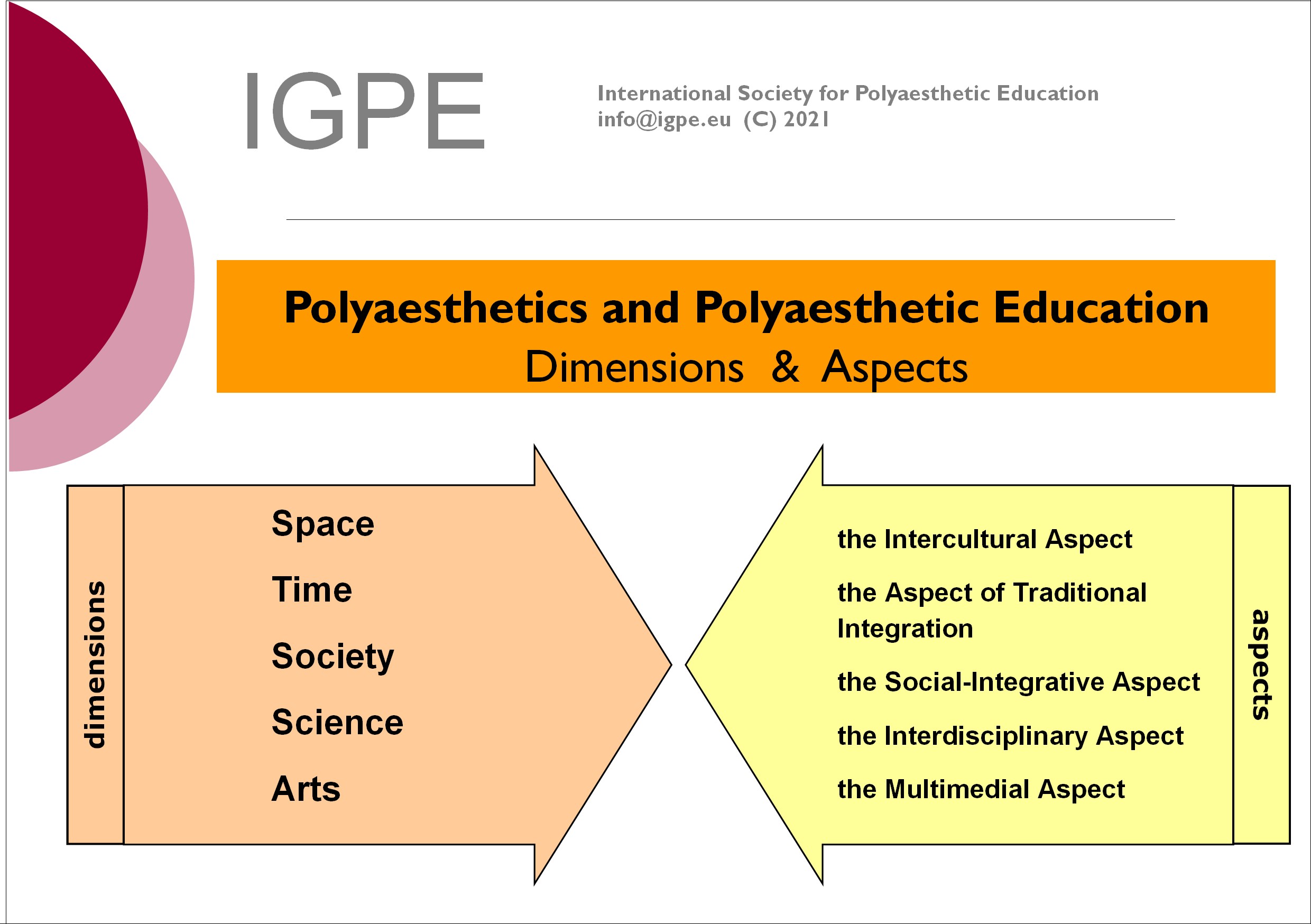Structure & Theory
Research of aesthetic Bildung
From a transdisciplinary, intercultural, social, inter-medial and tradition-integrative perspective, the International Society for Polyaesthetic Education [IGPE] is dedicated to research, teaching and implementations in educational fields of application.
IGPE is dedicated to building bridges between the arts, between the arts and sciences and between cultures and education in general.
IGPE intends to face up to the challenges and concerns of current cultral and social developments and their resultant educational problems.
For further details, please refer to the statutes of the International Society for Polyaesthetic Education -> Statut der Internationalen Gesellschaft für Polyästhetische Erziehung.
IGPE is a registered association (central register of associations No 892634065) which was founded in 1982 at the Fortress of Hohensalzburg by Dr. Wolfgang Roscher (1927-2002) and a group of proponents. The -> board of directors is international and interdisciplinary.
Structural diagram of Polyaesthetic Education

Polyaesthetic "Mehrwahrnehmung"
The origin
Polyaesthetic education was created as an art and music educational concept in the early 1970s by the German music educator Wolfgang Roscher.
Culture of perception
The development of a culture of perception is a central issue in polyaesthetic education.
"Culture of perception" presupposes critical sensorial perception.
Polyaesthetic education focuses on the quality of sensory perception not on its quantity.
Integral, multi-sensorial awareness
The term "polyaesthetics" refers to Aristotelian philosophy, to the "sensorium commune" in Aristotle's "De Anima". Objects are not only perceived by singular senses; there is an interaction of sensory perceptions in an integral, multi-sensory perception.
Integral, multi-sensorial awareness leads to a kind of "in-depth-perception" which is named "Mehrwahrnehmung".
Experience and expression
"aisthesis" (perception in the broadest sense) and "poiesis" (shaping, moulding) are interdependent.Our way of perceiving influences our conception (according to Aristotelian thought), but also serves as a basis and impulse for creative moulding.
Polyaesthetic education applies this knowledge base in its content, didactics and methods. Aesthetic experiencing and performative expression interact. The polyaesthetic didactics of reception and of production become effective together: The way we perceive things influences our creative power. Evidence of human "Gestalten" in the broadest sense of a creative process, in turn, has a direct and sustainable influence on our perception.



